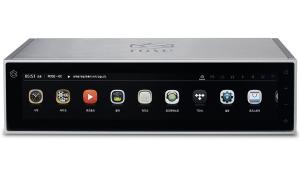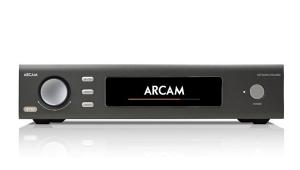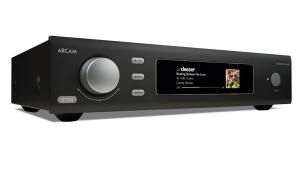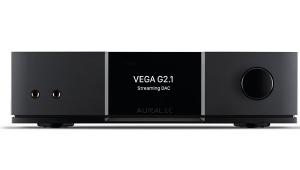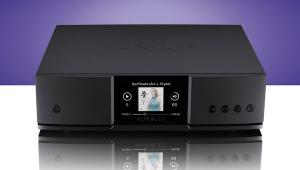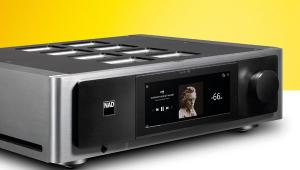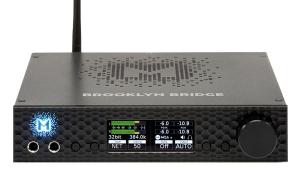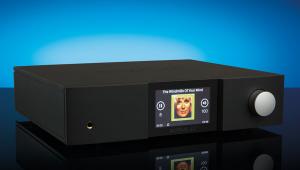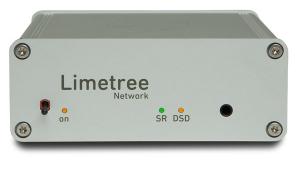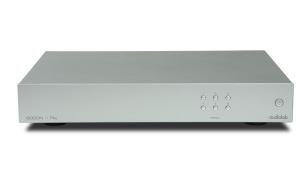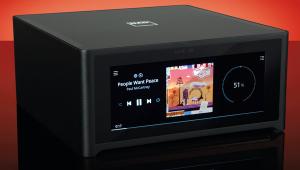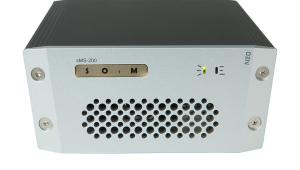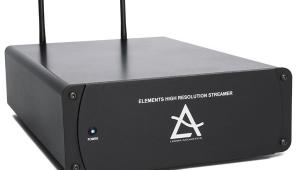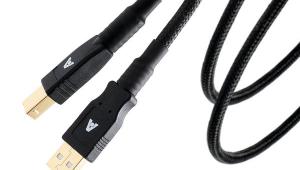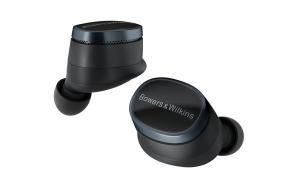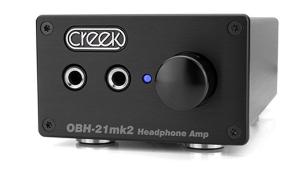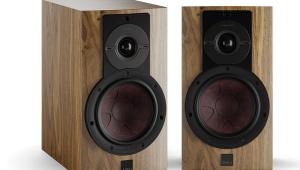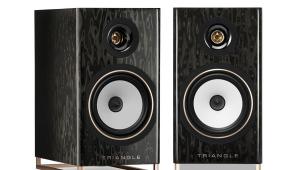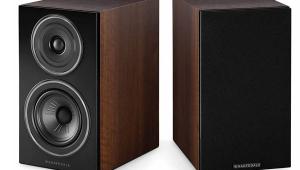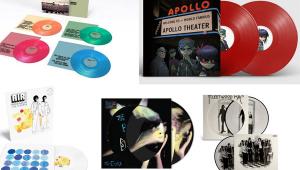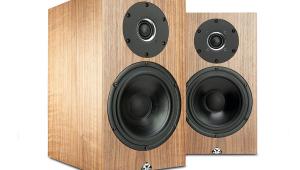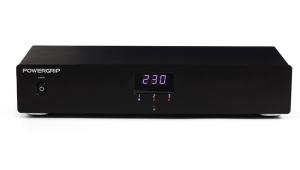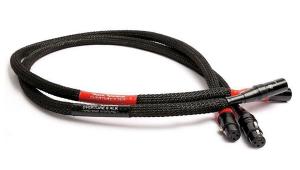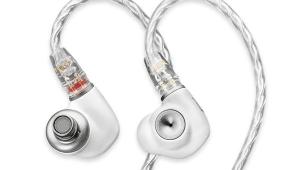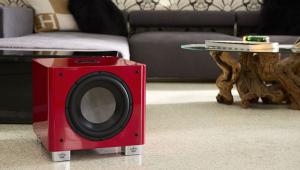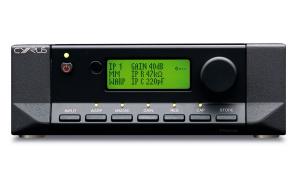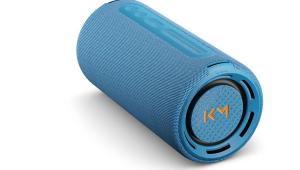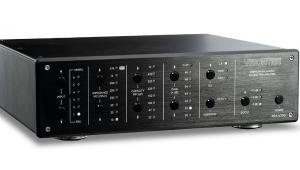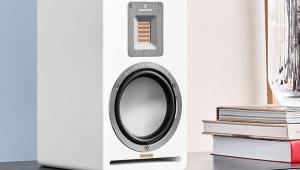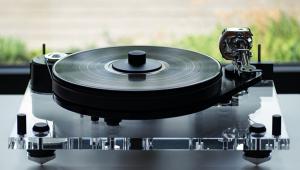Primare NP30 - £2,000
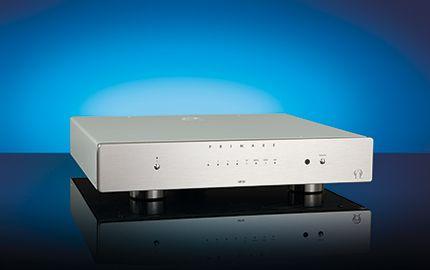
With a reputation for elegant Scandinavian design, Primare’s products are instantly recognisable for their minimalist approach to high-end separates. At £6,500 each, the recently launched flagship 60 pre/power amps ooze class from their two-tone titanium and black cases housing the company’s latest UFPD (Ultra Fast Power Device) Class D technology. Below these amps sits a selection of more modestly priced amps, CD players, a DAC and a MM/MC phono stage.
The NP30 is based on the MM30 ‘media board’, a £1,300 add on that slots into dedicated ports in Primare’s I32 integrated and PRE32 preamp, turning them into fully fledged network players. As well as placing this module into its own isolated case, what the extra cash buys you in the standalone NP30 streamer is a dedicated power supply and output stage with an extra buffer, alongside a wealth of connectivity. Digital inputs include USB type A and B (asynchronous) for hardwiring laptops or iPods directly, alongside S/PDIF inputs shared over three optical (Toslink) and only one coaxial (RCA) socket. Because the latter will accept up to 192kHz compared with the optical sockets’ 96kHz limit, I’d happily trade a couple of optical sockets for another coaxial or USB, but you still have plenty to chose from. Wi-fi is also catered for via a rear-panel stubby antennae, but as this is limited to 16-bit/48kHz, the Ethernet port is my preferred solution to get the best of the NP30. Output-wise alongside a pair of line-level RCAs and an S/PDIF (RCA), you’re offered a pair of XLRs, which are fully balanced right from the DAC.
Like its £2,000 standalone DAC30 cousin, the NP30 uses a Burr-Brown SRC4392 24-bit/192kHz upsampling converter, but instead of the DAC30’s Crystal CS4398 Delta-Sigma DAC, the NP30 employs a Burr-Brown PCM1792 chip. Inside the NP30’s chunky case the high-spec continues, with six analogue and three digital power supplies, a four-layer PCB and discrete FET output amps.
At a glance you’re hard pressed to tell this streamer apart from its DAC sibling, because unlike your average streamer, the NP30 intentionally eschews a front panel screen in favour of a row of LEDs denoting power, chosen source and signal lock (these lights can also be switched off using the supplied remote). What’s more, there’s no dedicated desktop software for Windows or Apple computers. Instead, the NP30’s internal Audivo SeDMP3 ‘EMAS’ (Embedded Module for Audio Streaming) is either controlled via Primare’s latest C24 remote or the excellent Primare App (for Android and iOS devices). In practice the app is all you need, not because the remote control is in anyway poor, but because the app is so slick and intuitive to use. By deliberately engineering the NP30 in this way, Primare has played a clever hand, as an app is far easier to refresh than a product’s digital hardware, and the NP30 won’t aesthetically date as quickly as many streamers released in the last half decade.
Appy and you know it
Once downloaded, the app automatically finds and connects to Primare devices on your home network. You can then chose your playback source, ranging from the NP30’s digital inputs and music stored on your network, which the Primare identifies as ‘Audio Server’, correlating to its front panel ‘Media’ input.
Viewing the app via my iPhone 4s and iPad 2 neatly displays album artwork thumbnails, and once an album or track is selected for playback, a quick tap on the info icon reveals the music’s format, bitrate and sample rate. There’s also a random feature, repeat settings and most importantly, a volume slider to control the Primare’s output (in the digital domain) allowing it to act as a preamp, feeding a power amplifier directly or a pair of active speakers.
Primare has also thoughtfully included the vTuner internet radio platform within its app and Spotify users additionally can stream directly from their PC/Mac or an iOS smartphone via the MusicFlow and Remoteless apps.
Sound quality
From the opening bars of Devon Sproule’s Don’t Hurry For Heaven album streamed via a 16-bit/44kHz FLAC rip over Ethernet and with the NP30 driving my preamp from its balanced outputs, I know I’m in the company of an experienced beast. The Primare isn’t like many a streamer or digital front end, which all too often sonically leap straight out of the speakers like an eager puppy, with dazzling zing that may be initially impressive, but quickly becomes tiresome. Instead it is quite the opposite, being more relaxed in character with a refined tone that’s a joy to listen to for hours on end. In this respect it reminds me of a top-flight vinyl rig when a given arm, cartridge and turntable are working in perfect harmony to give a sound that’s effortlessly balanced.
This sonic trait seems to particularly stem from the NP30’s midrange, which remains smooth and lucid without being in any
way forward or overly attention grabbing, helping to bring out the best in Sproule’s unforced singing. The way the Primare stays true to Devon’s relaxed vocal style tells me that it’s quite happy to sit back and let the music flow with natural rhythm and pace. With the slow-rolling melody of Sproule’s The Easier Way track, the streamer gives the melody just the right amount of bluesy ambience, presented in a convincingly proportioned soundstage so that the percussion and slide guitar have plenty of space to express themselves.
Moving on to more zesty musical matter via a 16/44 ALAC rip of Dennis Wilson’s Pacific Ocean Blue highlights the NP30’s ability to stay on its toes, anticipating grand dynamic swings, which it delivers with ease while ensuring the music maintains consistent levels of energy and momentum without any overhang. The funky and more complex grooves of this track really lets the Primare show just how effortlessly natural sounding it is. The soundstage is again notably expansive and accessible and as you’d expect of a streamer in this price bracket, instruments are well separated with each one sounding convincingly three-dimensional. But what’s more telling of the Primare’s quality is how I can hear each instrument’s unique characteristics when pinpointing them within the soundstage. The track’s bass guitar sounds tight with slightly rolled-off EQ, while the rhythm guitar rings with more echo and the cymbals sound crisply defined, which when all combined has me reaching for the app’s repeat icon so I can continue to explore all the sonic detail that lies just under the song’s surface.
As with the Sproule album, the Dennis Wilson material again highlights that the Primare is blessed with an analogue richness that’s as reminiscent of a top-notch phono stage as it is a DAC. Wilson’s gravelly vocals flow with a languid ease that tells me that what I’m hearing is about as close to the album’s studio sessions as I’m going to get within my listening room. The music is full of atmosphere that seems to bring to life the energy of the recording, which really gets my pulse racing.
Piping internet radio via a Radio 3 live performance of Christian Blackshaw playing Schubert’s Sonata in C Minor at the 2014 Aldeburgh Festival, I’m immediately transported into the audience, a stone’s throw from the stage. The elegant piano work is edge of the seat stuff as the Primare lets the notes climb and fall with deliberate softness or palpable punch as Blackshaw dictates. The piano keys ring with convincing realism, while its bass notes carry impressive weight that’s of a quality well beyond your average internet radio experience.
Equally impressive is how the NP30 gives little if anything away when streaming via Ethernet, compared to feeding it directly from my laptop via USB cable. Back to back comparisons using a 24/192 FLAC of Claire Martin and John Martyn’s Man In The Station reveals that both inputs sound exceptionally smooth and layered with detail. Bass is well rounded with plenty of texture across both inputs, and enough power to give my Dynaudio floorstanders’ bass drivers a thorough workout. The guitar work is blessed with exceptional delicacy, illustrating how the Primare fully appreciates and understands how to present such a quality recording to do it justice.
Conclusion
With its top-quality minimalist aesthetic, the NP30 exudes class without visually showing off. But behind its understated casework lies a deceptively smart product. Its dedicated app is one of easiest and most intuitive, making the Primare a breeze to get to grips with. Its internal DAC is also seriously good, giving the music a sophisticated mellow tone that both digital and analogue fans will enjoy in equal measure.
LIKE: Articulate and effortlessly musical; Great app; XLR outputs
DISLIKE: Just one coaxial S/PDIF input (but three optical)
WE SAY: Combines a well executed streamer with a superb sounding DAC and with preamp functionality to boot
DETAILS
PRODUCT Primare NP30
ORIGIN Sweden
TYPE Streamer/DAC
WEIGHT 8.5kg
DIMENSIONS (WxHxD) 430 x 95 x 370mm
FEATURES
• Burr-Brown 24-bit/192kHz upsampling DAC
• Wi-fi and Ethernet streaming
• USB and S/PDIF inputs
• XLR, RCA and S/PDIF outputs
• WAV/AIFF/FLAC/ALAC/MP3/AAC/WMA/OGG file support
DISTRIBUTOR Karma-AV
TELEPHONE 01423 358846
WEBSITE primare.net
 |
Inside this month's issue:
Q Acoustics 3020c standmount loudspeakers, Perlisten R10s active subwoofer, Quad 33 and 303 pre/power amps, Acoustic Solid Vintage Full Exclusive turntable, newcomer Fell Audio Fell Amp and Fell Disc and lots, lots more...
|

